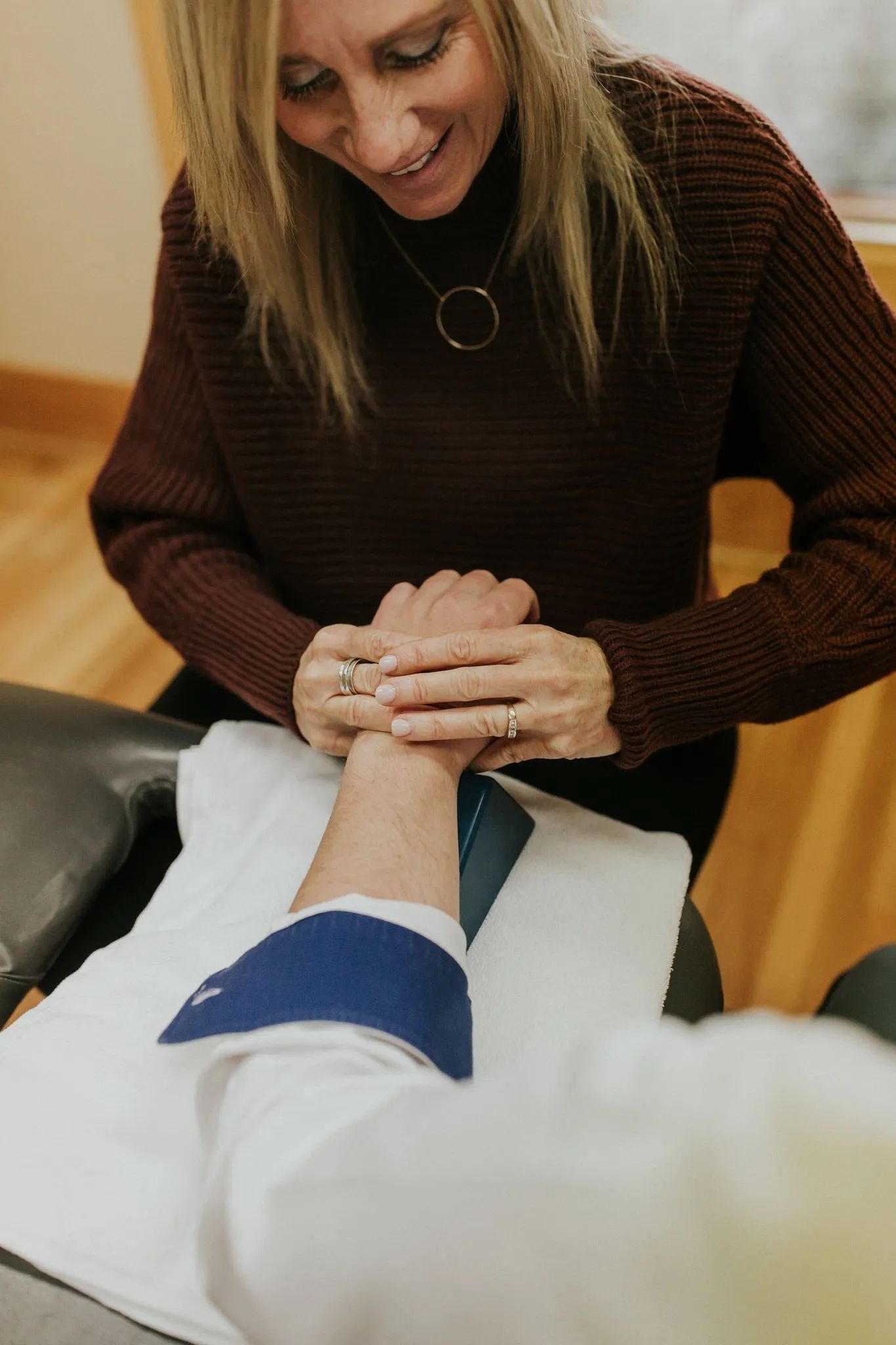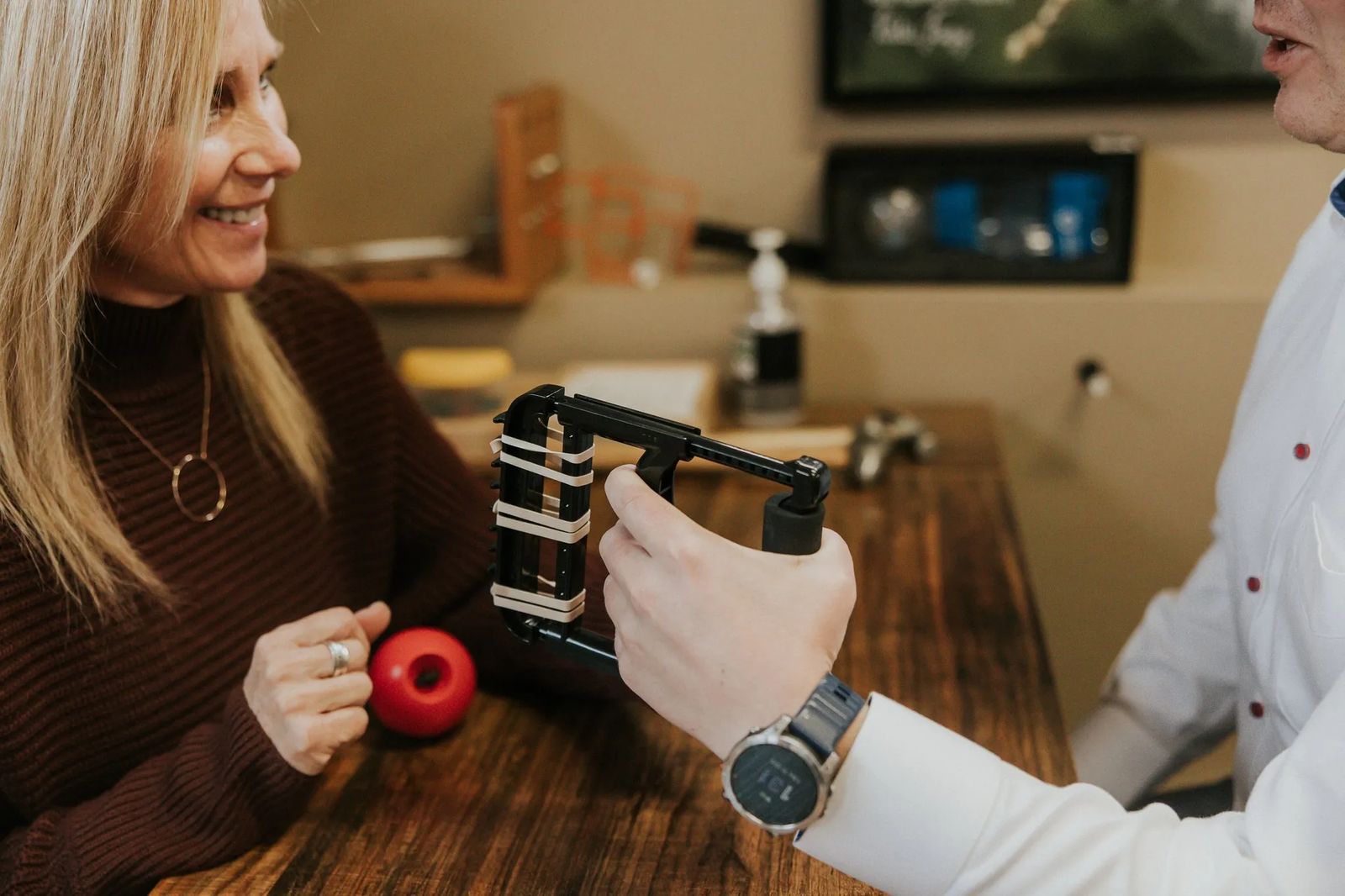Shoulder, Elbow, Wrist & Hand Rehabilitation
All therapeutic procedures utilized are effective, evidence-based therapies confirmed by clinical research.
A Certified Hand Therapist practices the art and science of rehabilitation of the upper extremity, which includes the shoulder, elbow, wrist, and hand. Shoulder to hand therapy is a practice that combines comprehensive knowledge of the structure of the upper limb with function and activity.
Common conditions that benefit from skilled care of a CHT:
- Shoulder Impingement
- Rotator Cuff Tear
- Tendonitis
- Wrist pain and/or instability
- DeQuervain's Tenosynovitis
- Lateral Epicondylitis ("Tennis Elbow")
- Medial Epicondylitis ("Golfers Elbow")
- Carpal Tunne/Cubital Tunne/Radial Tunnel
- Dislocation/subluxation of Shoulder or Elbow
- Trigger Finger/Thumb
- Osteoarthritis
- Rheumatoid Arthritis
- Thumb pain and/or instability
- Numbness/tingling
- Finger Injuries
- Brachial Plexus Injuries
- Adhesions or tightness (e.g., musadotendinous, capsular)
- Crush injuries/mutilating trauma
- Cumulative trauma/repetitive use injuries
- Ganglion Cysts
- Dupuytren's disease
- Fractures
- Ligamentous injury and instability
- Muscular strains, tears, and avulsions
- Nerve injuries and conditions (e.g., neuropathies, palsies, nerve repairs)
- Pain (e.g. complex regional pain syndrome, fibromyalgia)
- Spinal cord and central nervous system injuries
- Tendon injuries and conditions (e.g., lacerations, transfers, tendonitis, ruptures)
- Wounds and scars

What is a Certified Hand Therapist?
A Certified Hand Therapist has achieved national recognition by obtaining a certification that involves a minimum of 5,000 hours of experience, advanced training and rigorous testing. Using specialized skills in assessment, planning and treatment, CHTs provide therapeutic interventions to prevent dysfunction, restore function and/or reverse the progression of pathology of the upper extremity to enhance an individual's ability to execute tasks and to participate fully in life situations.
All therapeutic procedures utilized are effective, evidence-based therapies confirmed by clinical research.


The importance of choosing a CHT as your provider:
People value the use of their hands and any loss of function through injury or accident may have a devastating effect on their lives. The intricate anatomy of the arm and hand frequently requires very delicate surgery, often with microscopic techniques. The technical complexity of these kinds of surgeries necessitates a high level of competence by therapists with advanced skills in upper extremity rehabilitation during postoperative recovery. Therapists must be knowledgeable about these advanced surgical techniques and postoperative therapy programs to become CHTs. They must also remain current with changes in hand therapy practice.
The Certified Hand Therapy Credential:
Certification is voluntary and difficult to attain. It involves meeting rigorous standards, developing a long-range career path, and acquiring the advanced study and training required to pass the certification examination. CHTs are therapists who demonstrate a personal dedication to the profession of hand therapy and a desire for advanced competency; they bring to their work a commitment and dedication to reach and maintain the highest standards in their profession. The CHT credential is recognized by many professional organizations as a benchmark for excellence in advanced specialty credentialing in health care.
